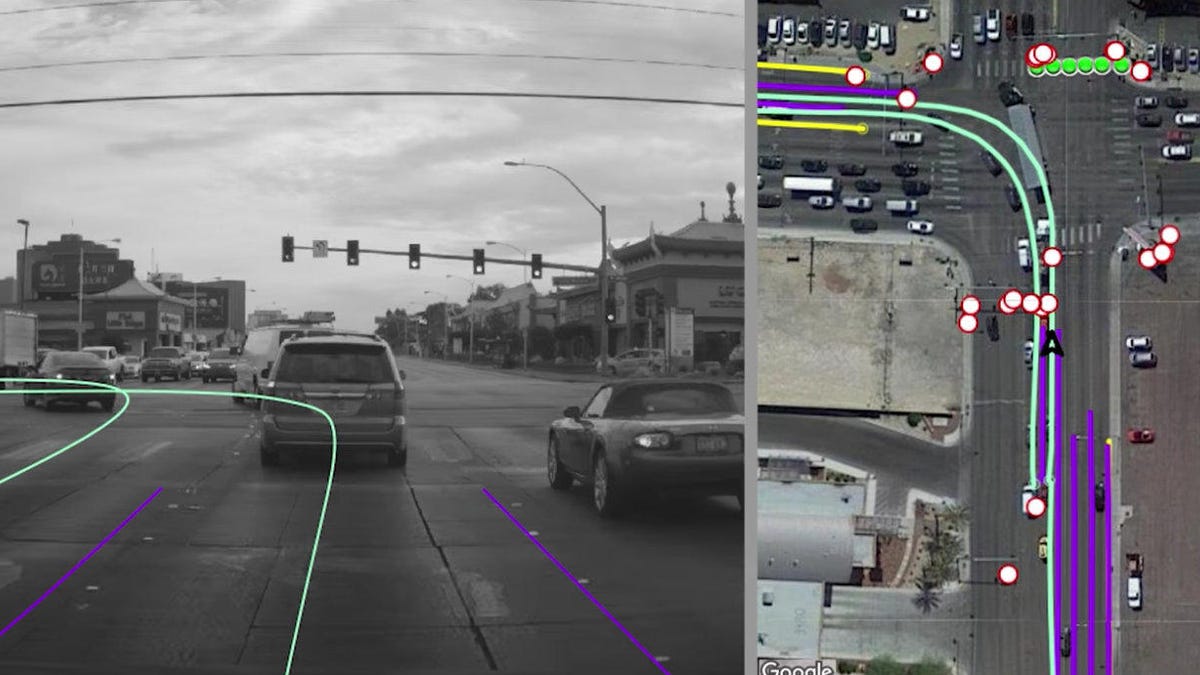Two million cars will map roads for Intel in 2018
Through cameras already installed in production cars, Intel will build highly detailed maps of roads around the world for self-driving vehicles.
Self-driving cars need detailed, 3D maps to figure out precisely where they are, but sending out fleets of mapping cars equipped with lidar and other sensors is extremely labor- and cost-intensive. Intel is taking a shortcut by crowd-sourcing imagery from camera-based safety systems already installed in production cars.
Through its recently acquired subsidiary Mobileye, which supplies image processing chips to the automotive industry, Intel will build what are called HD maps of current roads, downloading the imagery over cars' built-in data connections. This data will go into what Kathy Winter, Intel vice president of automated driving solutions, calls a global RoadBook.
Human-driven and self-driving cars can then use this data to understand what's on the road ahead, be it traffic infrastructure or tricky intersections.
Automakers, equipment suppliers and technology companies are all working on self-driving cars, which have the potential to reduce or eliminate the more than 1 million traffic deaths that happen worldwide every year. Self-driving cars, whether as a service or individually owned, are widely predicted to hit roads by 2020.
Intel announced its efforts to build a self-driving car platform last year. Its Mobileye acquisition not only advances that effort through the company's technology, but gives it a strong supplier relationship with existing automakers.
Mobileye's Road Experience Management program (REM) makes up a key part of this technology. Current cars from Volkswagen Group and Nissan will contribute imagery to REMusing Mobileye's chips, which enable automatic emergency braking to avoid or mitigate collisions. The cars will transmit the imagery to the cloud in what Intel describes as "low-bandwidth data packets."
Winter laid out a timeline of ingesting data through 2018 in preparation for the release of the global RoadBook in 2019. Rather than a static map, cars contributing to the system will be able to continually update the RoadBook with any changes their cameras see.
Intel plans a next-generation platform for its self-driving technology that will use two of Mobileye's planned EyeQ5 chips along with an Intel automotive-grade Atom C3xx4 processor.
In addition, Intel is partnering with Chinese automaker SAIC and NavInfo, a China-based mapping company, to develop self-driving cars for China.
Intel isn't the only company building HD maps of road systems. The Here consortium, backed by automakers such as Audi and BMW, is involved in a similar effort. Another company, Ushr, has used lidar and radar to map US highways. Its maps are being used to enable Cadillac's Super Cruise feature, which can handle steering, throttle and braking.
Winter said that Intel is interested in partnerships, and has an investment in Here. For self-driving cars to make safe driving decisions, they will need to work from a common understanding of road infrastructure.
Hyundai FCEV: We tackle 240 desert miles from LA to Vegas in Hyundai's new fuel cell prototype.
CES 2018: CNET's complete coverage of tech's biggest show.


